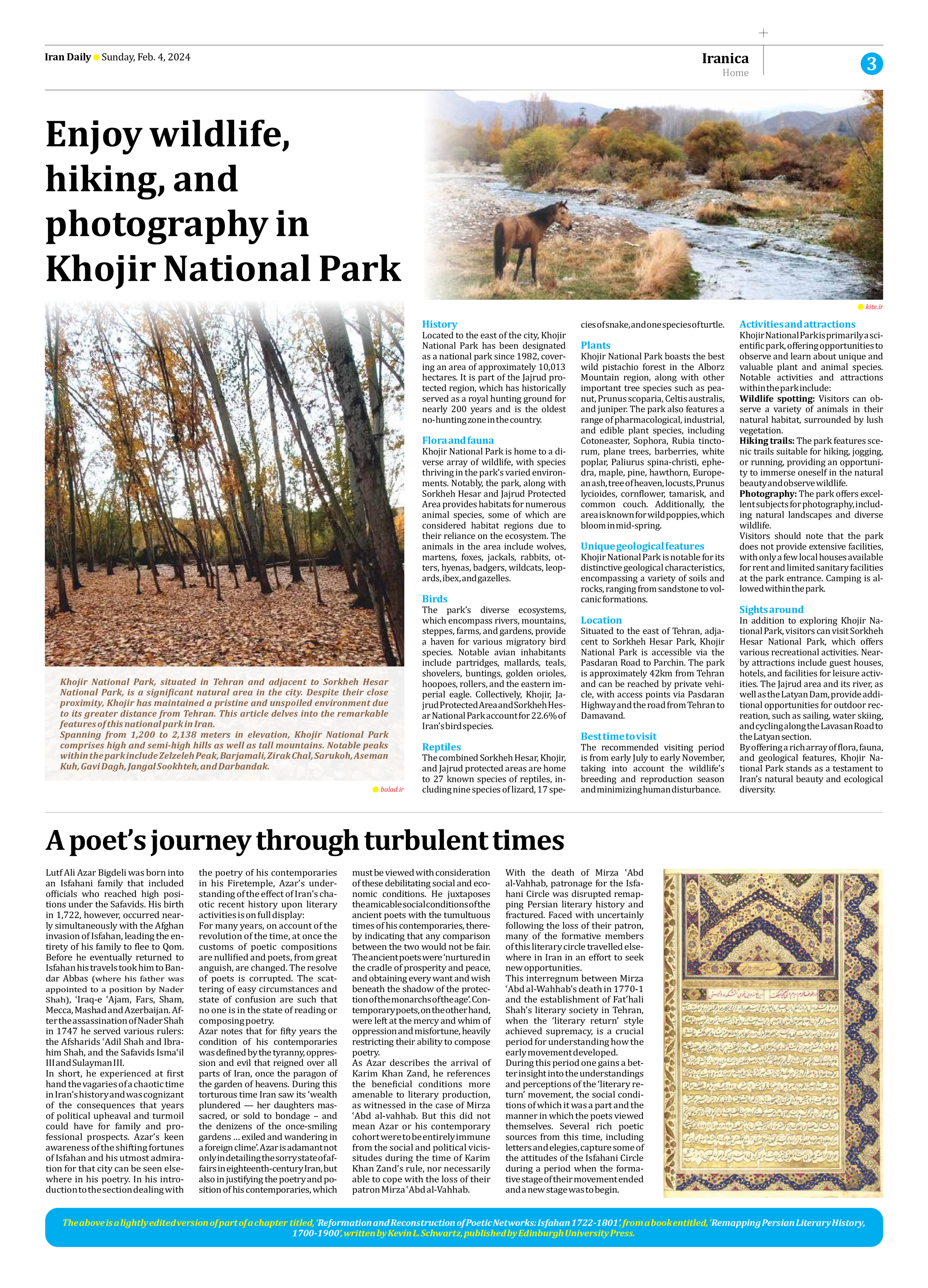
Enjoy wildlife, hiking, and photography in Khojir National Park
Khojir National Park, situated in Tehran and adjacent to Sorkheh Hesar National Park, is a significant natural area in the city. Despite their close proximity, Khojir has maintained a pristine and unspoiled environment due to its greater distance from Tehran. This article delves into the remarkable features of this national park in Iran.
Spanning from 1,200 to 2,138 meters in elevation, Khojir National Park comprises high and semi-high hills as well as tall mountains. Notable peaks within the park include Zelzeleh Peak, Barjamali, Zirak Chal, Sarukoh, Aseman Kuh, Gavi Dagh, Jangal Sookhteh, and Darbandak.
History
Located to the east of the city, Khojir National Park has been designated as a national park since 1982, covering an area of approximately 10,013 hectares. It is part of the Jajrud protected region, which has historically served as a royal hunting ground for nearly 200 years and is the oldest no-hunting zone in the country.
Flora and fauna
Khojir National Park is home to a diverse array of wildlife, with species thriving in the park’s varied environments. Notably, the park, along with Sorkheh Hesar and Jajrud Protected Area provides habitats for numerous animal species, some of which are considered habitat regions due to their reliance on the ecosystem. The animals in the area include wolves, martens, foxes, jackals, rabbits, otters, hyenas, badgers, wildcats, leopards, ibex, and gazelles.
Birds
The park’s diverse ecosystems, which encompass rivers, mountains, steppes, farms, and gardens, provide a haven for various migratory bird species. Notable avian inhabitants include partridges, mallards, teals, shovelers, buntings, golden orioles, hoopoes, rollers, and the eastern imperial eagle. Collectively, Khojir, Jajrud Protected Area and Sorkheh Hesar National Park account for 22.6% of Iran’s bird species.
Reptiles
The combined Sorkheh Hesar, Khojir, and Jajrud protected areas are home to 27 known species of reptiles, including nine species of lizard, 17 species of snake, and one species of turtle.
Plants
Khojir National Park boasts the best wild pistachio forest in the Alborz Mountain region, along with other important tree species such as peanut, Prunus scoparia, Celtis australis, and juniper. The park also features a range of pharmacological, industrial, and edible plant species, including Cotoneaster, Sophora, Rubia tinctorum, plane trees, barberries, white poplar, Paliurus spina-christi, ephedra, maple, pine, hawthorn, European ash, tree of heaven, locusts, Prunus lycioides, cornflower, tamarisk, and common couch. Additionally, the area is known for wild poppies, which bloom in mid-spring.
Unique geological features
Khojir National Park is notable for its distinctive geological characteristics, encompassing a variety of soils and rocks, ranging from sandstone to volcanic formations.
Location
Situated to the east of Tehran, adjacent to Sorkheh Hesar Park, Khojir National Park is accessible via the Pasdaran Road to Parchin. The park is approximately 42km from Tehran and can be reached by private vehicle, with access points via Pasdaran Highway and the road from Tehran to Damavand.
Best time to visit
The recommended visiting period is from early July to early November, taking into account the wildlife’s breeding and reproduction season and minimizing human disturbance.
Activities and attractions
Khojir National Park is primarily a scientific park, offering opportunities to observe and learn about unique and valuable plant and animal species. Notable activities and attractions within the park include:
Wildlife spotting: Visitors can observe a variety of animals in their natural habitat, surrounded by lush vegetation.
Hiking trails: The park features scenic trails suitable for hiking, jogging, or running, providing an opportunity to immerse oneself in the natural beauty and observe wildlife.
Photography: The park offers excellent subjects for photography, including natural landscapes and diverse wildlife.
Visitors should note that the park does not provide extensive facilities, with only a few local houses available for rent and limited sanitary facilities at the park entrance. Camping is allowed within the park.
Sights around
In addition to exploring Khojir National Park, visitors can visit Sorkheh Hesar National Park, which offers various recreational activities. Nearby attractions include guest houses, hotels, and facilities for leisure activities. The Jajrud area and its river, as well as the Latyan Dam, provide additional opportunities for outdoor recreation, such as sailing, water skiing, and cycling along the Lavasan Road to the Latyan section.
By offering a rich array of flora, fauna, and geological features, Khojir National Park stands as a testament to Iran’s natural beauty and ecological diversity.







